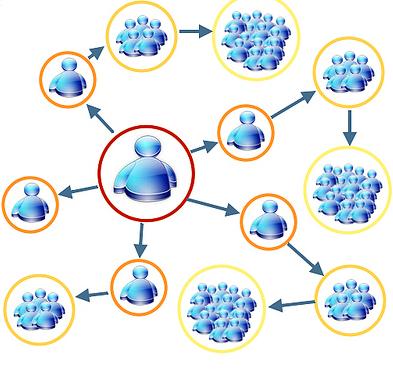How to Establish and Provide an e-Learning Environment:Eight Factors to ConsiderColleges, universities, and corporate organisations that wish to develop an e-learning strategy and develop e-learning teaching and training practices need to consider and address eight closely interrelated elements. A successful alignment of these elements is required to establish a successful e-learning environment.
1. Organisational Culture
In the first instance there is probably an existing learning culture and existing learning methods in place. This is the status quo with which all stakeholders are familiar and comfortable. Introducing technology into learning challenges this comfortable status quo and requires culture change. It requires key stakeholders teachers, managers, and learners to think differently and behave differently. Changing the status quo is always difficult. This is a key challenge.
2. e-Learning Maturity and Strategy
Organisations and individual stakeholders are at varying levels of maturity, awareness and openness regarding the use of technology in learning.
Amongst the stakeholders there can be 'blockers' and 'champions'. The attitude of the key decision makers is crucial. If a key decision maker is a champion, then it is easy to proceed and vice versa. Sometimes the champions come from unexpected sources. If champions from any source are supported when they create 'small-wins', this can act as an example for others and in this way helps to advance the use of technology in learning in other areas.
An e-learning strategy within the context of wider learning and training strategy will be enormously helpful. It will be put in place if and when the organisation and key stakeholders recognise the many issues to be managed in introducing technology into learning.
3. Resources
If an organisation wants to use technology to facilitate learning in any serious way, this will demand resources. It will require time, it will require that expertise be developed or found and it will require the investment of money and technological infrastructure. Successful e-learning initiatives tend to involve dedicated resources (personnel, budget, technological infrastructure and time).
4. Technology
Information and communication technology is evolving. This change has the potential to revolutionise :
- How people can learn
Where people can learn
- When people can learn
- Who can learn and who can teach
Teaching that takes full advantage of technological possibilities tends to move in the direction of being more learner-centric. The learner has more autonomy to drive his/her own learning. The teacher still has a hugely important role as the learning guide and facilitator.

The boundary between knowledge management and instruction is becoming blurred. If the purpose of learning is to enhance business performance (training within an organisation) there are many ways to support people's business performance by giving them access to the relevant information in the midst of their work as they need it, rather than removing them to a classroom. 'Help' functions can evolve to become sophisticated sources of guidance as people work.
The early years of e-learning have involved the creation electronic information based courses often followed via a Learning Management System or via the Internet. Interactivity in such courses is typically in the form of human-computer interactivity such as a quiz or drag and drop' exercises. These courses are most beneficial if blended with more traditional classroom learning involving human contact. Some subjects are probably more amenable to the e-learning environment than others, although this point is often debated.
Web 2.0 technology facilitates new types of human-human interactions and is supporting newer e-learning initiatives which focus less on content and more on collaborative knowledge sharing and creation, thus facilitating new methods of teaching and learning. For this to be successful in an organisation managers, learners and teachers need to become sensitised to its potential, negotiate significant culture change and learn how to use the new tools for learning.
The quality of technological infrastructure and of technological expertise will crucially affect any e-learning endeavour in an organisation. Issues of compatibility are crucial. The choice of any Learning Management System is a key decision. Technical personnel must be capable of communicating with and understanding the instructional design personnel and vice versa. Organisational managers play a role in ensuring that the technial personnel and the learning team work together effectively to achieve results from technological investment.
Subject Matter Expertise
New learning experiences cannot be created without subject matter expertise. In many cases e-learning initiatives focus on topics on which a great deal of expertise already exists, but this expertise may exist only within the mind of experts, or it may lie within documents or in Power Point slides. Whatever the case, a method must be found to identify the subject matter, structure it and transpose it into a form that can be used within an e-learning context.
This may require significant time in interrogating subject matter experts and processing the outputs. The design of such activity is crucial. This is a creative process. Outputs are likely to pass through a number of iterative cycles before the required standard is achieved. Content is initially made available as unsorted raw data. Instructional design skills involve sorting and structuring that data, ensuring the filling of missing material and weaving the content into a coherent whole that is pedagogically effective and in keeping with the learning objectives.
Instructional Design (ID)
Instructional design is the process of designing the learning experience. It requires an awareness of how learning occurs understanding and applying learning theories to the particular subject matter within the specific context. It also requires knowledge of how this can be achieved using technology as a learning tool.
To be successful instructional design must relate in practical ways to the learning context and the type of learners.
Appropriate instructional design is the key factor in the success or otherwise of all structured learning experiences.
However, with the advent of the information age and the potential of information and communication technology, the possibilities in the field of instructional design (the how to' or application of learning theory) are significantly altered. Quality instructional design for e-learning is still very much an emerging field and will continue to evolve as technology evolves. For example, the concept of learning space is evolving to accommodate the possibilities afforded by technology. Rows of seats facing a teacher at an appointed time may become a thing of the past as learners focus on screens, whiteboards and mobile electronic devices.
The User Interface
If learners are to learn successfully while engaging with a computer, then the computer interface should contain something that draws the learner in, that is easy and accessible for a wide variety of learners to use and that will best facilitate learning. The interface must be designed to suit the specific users. The issues here range through graphic design, sound quality, usability and accessibility.
Some interface recommendations:
1. Aim to suit diverse target users in terms of usability
2. Consider users from the points of view of
- -culture
--learning style
- -supporting their learning (eg: colours and shapes as learning features)
- -accessibility for all users including those with disabilities
- computer familiarity and literacy
3. Put what is important and frequently used to the fore
4. Assess the impact of light versus dark text and background
5. Screens should be consistent
6. Navigation should be as intuitive as possible
7. Consider the need to put text on buttons
8. Minimise redundant artifacts on the screen
9. Highlight what is priority for user at any time
10. Use sans serif' font style
11. Group related items on the screen
12. Use colour conservatively
13. Allow for short cuts
14. Design to prevent errors and give good error messages
15. Allow for easy reversal of actions
Support Systems for Learners and Teachers
Because the introduction of e-learning involves significant cultural and practical changes, the transition from the traditional approach requires that supports be put in place for teachers and the learners. A learning support team is the ideal scenario. As a minimum, learners and teachers need some introduction to e-learning and specific supports related to specific initiatives. This could be in the form of online or documentary support or through person-to-person support. Learners require both technological supports and subject matter supports as they undertake an e-learning course.The issue of supports should be addressed in the context of e-learning strategy.
Summary
It is here suggested that there are at least eight key elements that organisations need to manage effectively in order to effectively integrate e-learning within the organisation as follows:
1. The Existing Culture
2. E-Learning Maturity and Strategy
3. Resources
4. Technology
5. Subject Matter Expertise
6. Instructional Design
7. User Interface
8. Support Systems
In addition to managing these elements, it is crucial that the elements are successfully integrated with each other within the specific context the pieces of this e-learning jigsaw must match. This is a big challenge as the fields of technology and learning have not traditionally been particularly closely aligned.


























